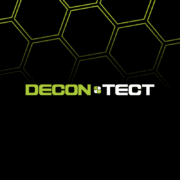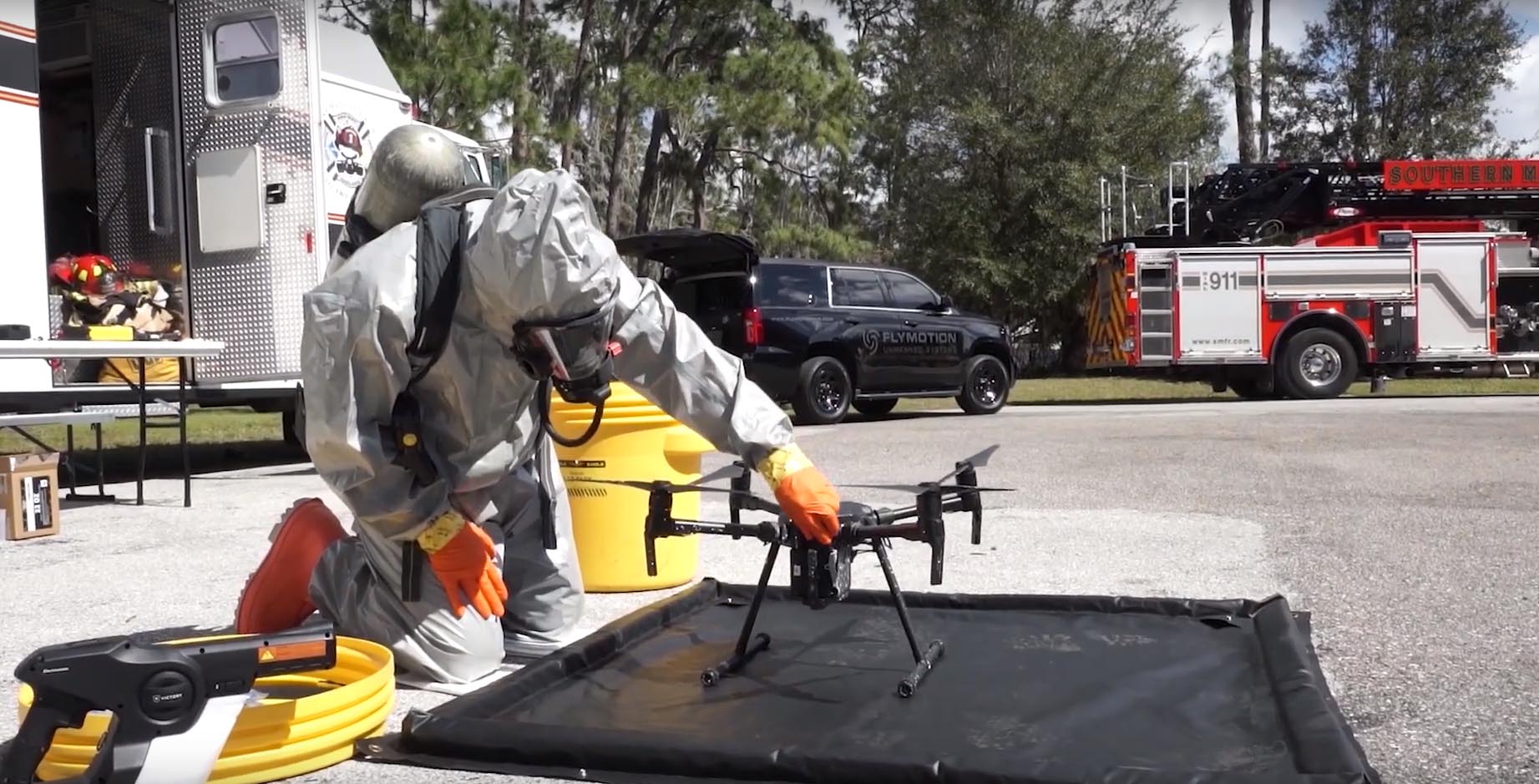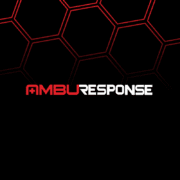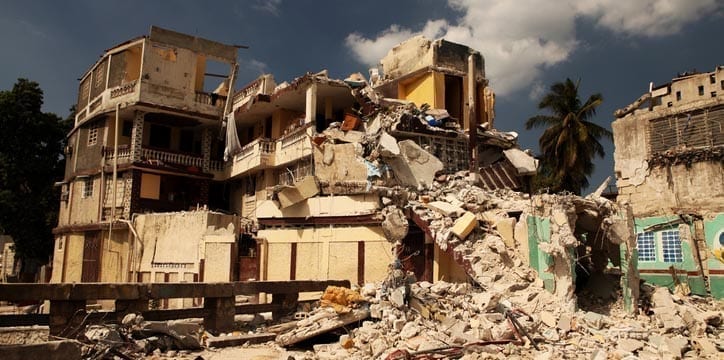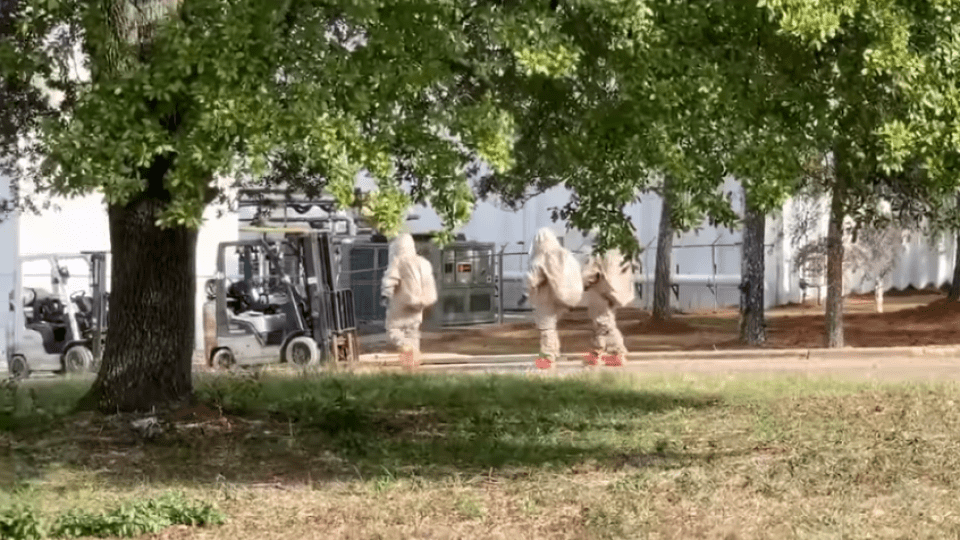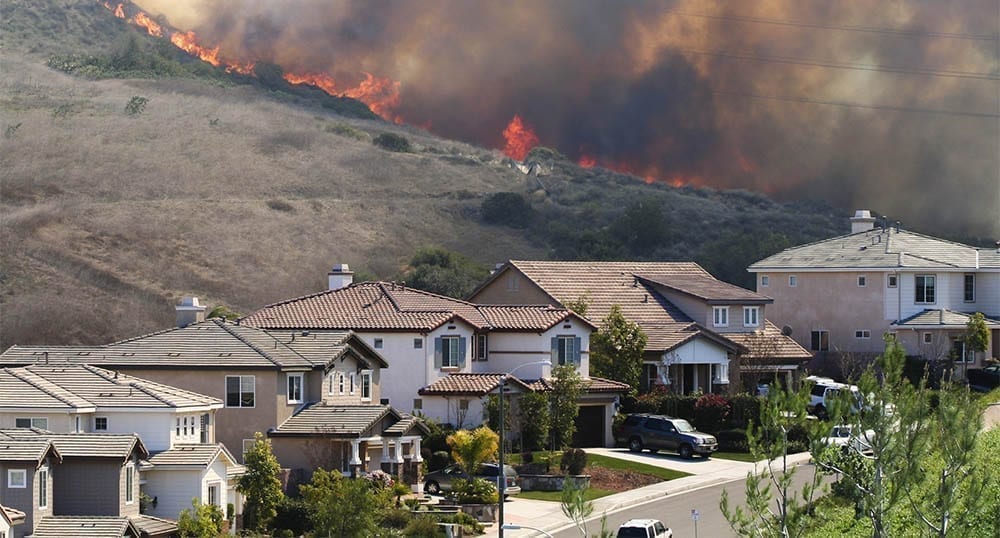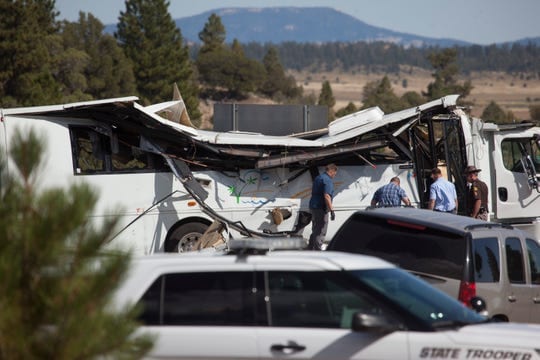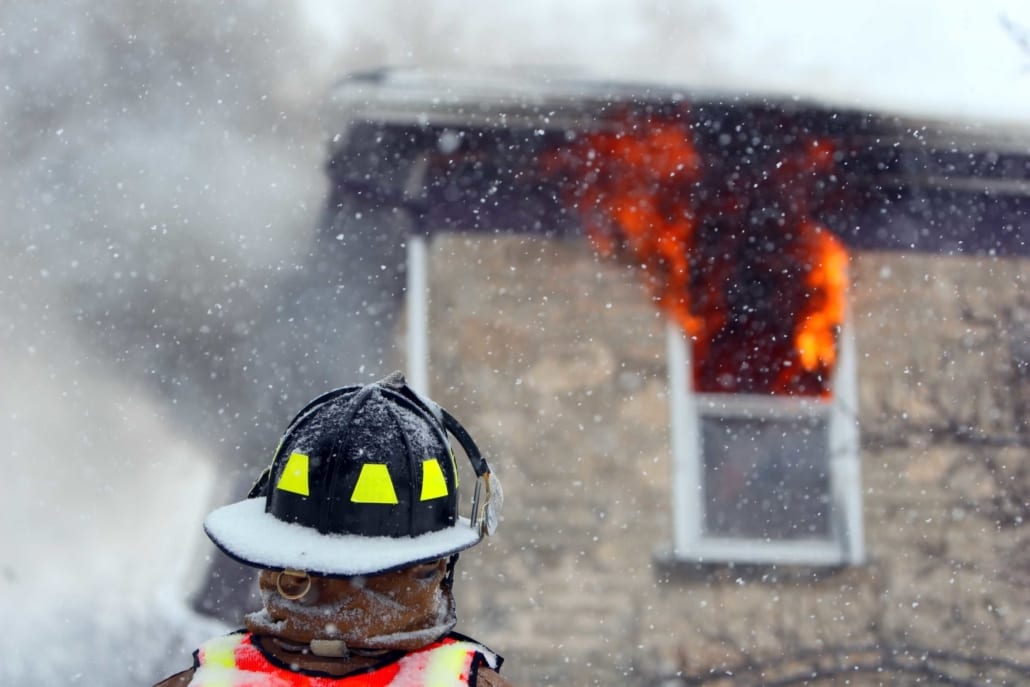Save a HazMat Team. Send a Drone.
Every minute in a hot zone puts your operators’ lives at risk. But whenever a HazMat incident occurs, the cause of the problem must be found and the threat neutralized.
Up to now, the only way to find the problem was to don PPE and enter the hot zone. But increasingly, Unmanned Aerial Vehicles (UAV) or drones, and Unmanned Ground Vehicles (UGV) or robots, are being used in HazMat operations for situational awareness and identifying the threat as well as communications during the deployment.
Recently, the Southern Manatee Fire & Rescue HazMat Team deployed a fleet of DJI drones in a HazMat response at an industrial warehouse. DJI, the manufacturer of the drones used in this deployment wrote an excellent case study of this deployment. Their article can be found here.
But sending a drone or robot into a hot zone creates a new problem; decontaminating the unmanned vehicle and the sensitive sensors, optics, and electronics it carries. Traditional wet decon processes usually involved large quantities of liquid at high pressures or the use of corrosive solutions.
To find a way to safely decon unmanned vehicles, FLYMOTION, the a leading reseller of DJI drones in the United States partnered with First Line Technology to develop a Drone Decon Kit (DDK)™.
“As we worked with our customers who are using drones in HazMat operations, they wanted a safe, and efficient way to decontaminate both the drone and the sensors it carries. Working together with First Line Technology, the company that pioneered the Hybrid Decon process, we were able to develop an easy-to-use kit that is rapidly deployable and can neutralize almost any contaminant while protecting all the sensitive equipment and the drone itself.”
Rich Gatanis, FLYMOTION
First Line pioneered the Hybrid Decon™ process which uses a three-part dry decontamination wipe called FiberTect®, which can remove up to 95% of a contaminant. Then the remaining contaminant is sprayed with a small quantity of Dahlgren Decon™, a non-corrosive decontamination solution developed by the U.S. Navy.
Watch Southern Manatee Fire & Rescue HazMat Team field testing the Drone Decon Kit below:
For more information or to request a quote on the Drone Decon Kit, visit https://flymotionus.com/product/drone-decon-kit/

